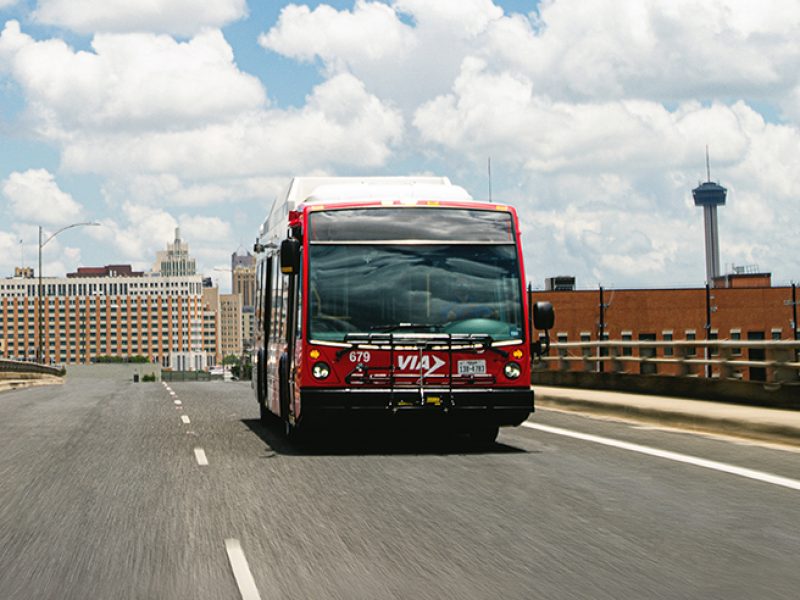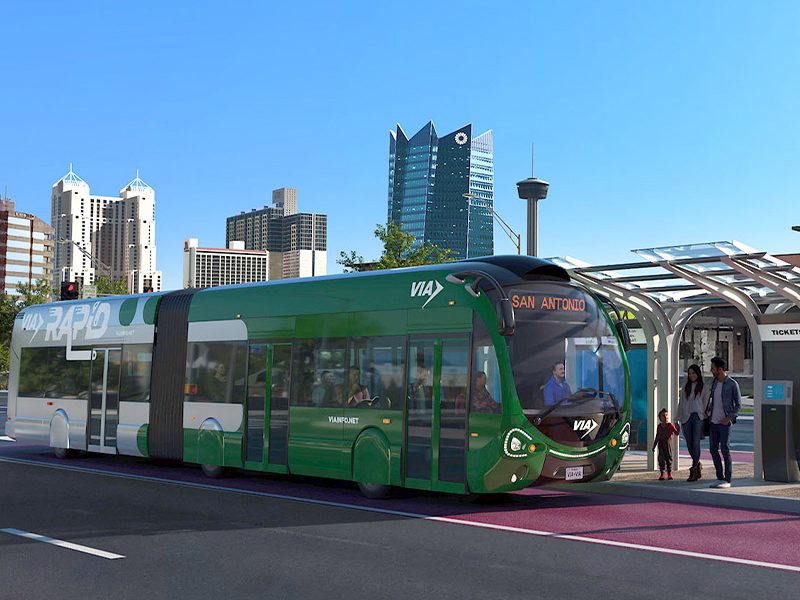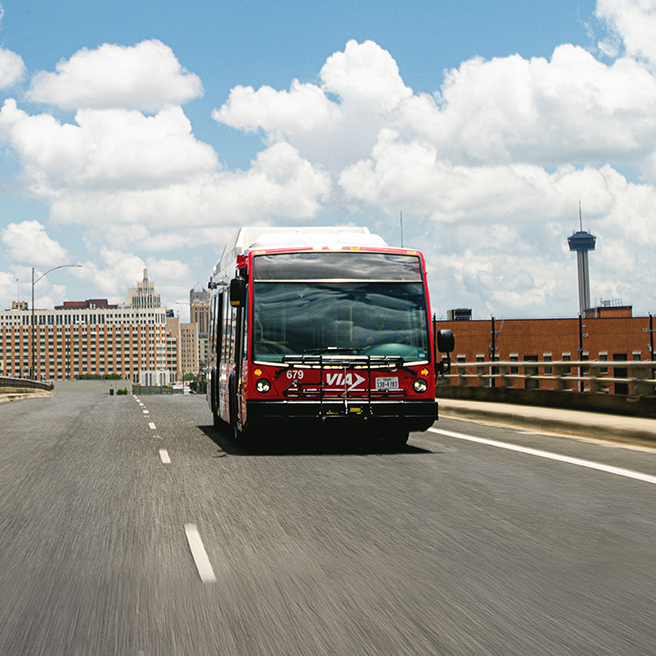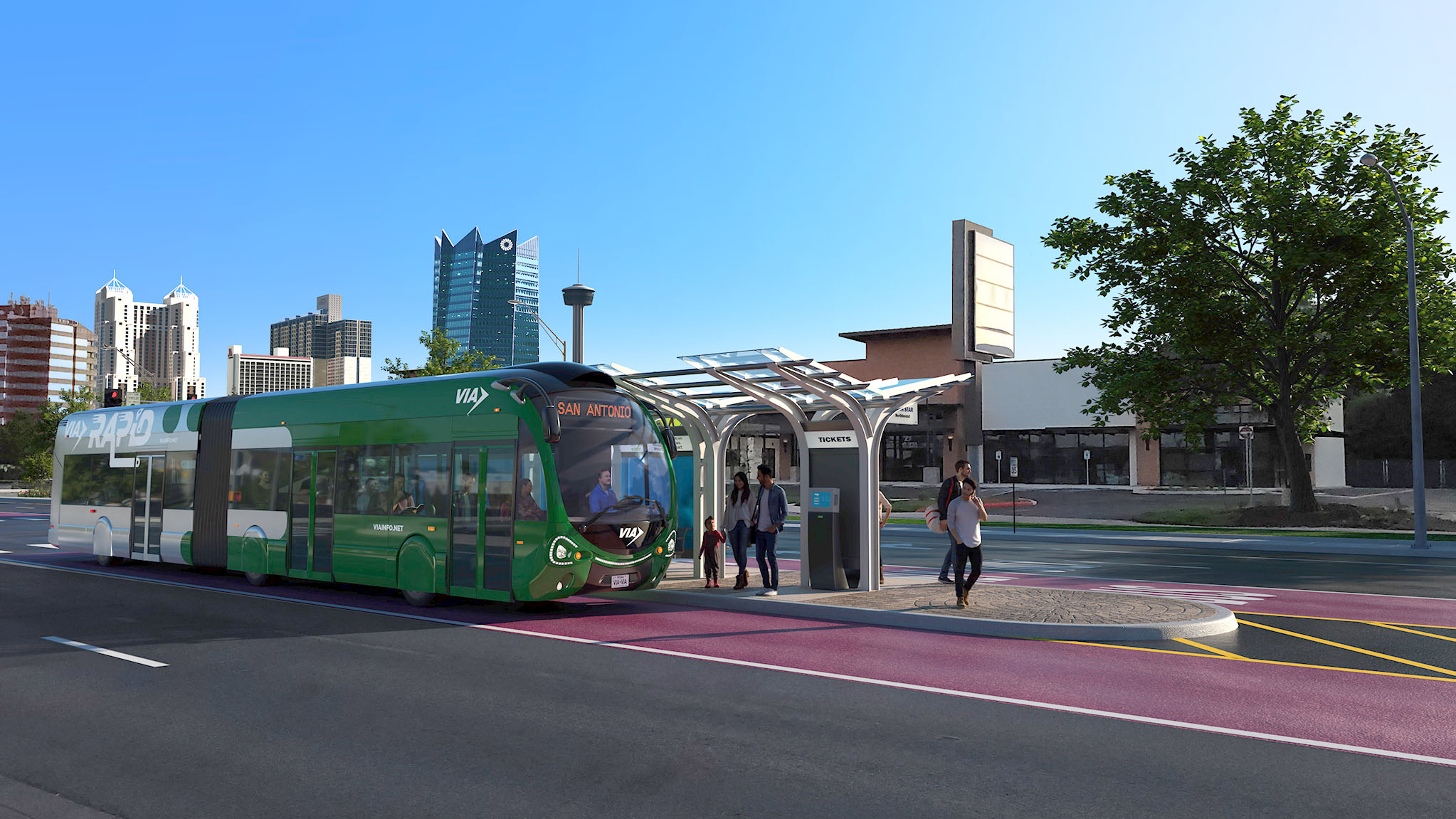
Voters Support Moving People Faster and Farther
In 2004, San Antonio voters approved the creation of the Advanced Transportation District (ATD), a partnership between VIA, the City of San Antonio, and Texas Department of Transportation (TxDOT).
San Antonio’s public transit system historically has been underfunded compared to other major metro areas in Texas. Cities such as Austin, Dallas, and Houston, allocate the maximum-allowed 1% of sales tax to fund their respective transit authorities, which is the full amount allowed by state law. Prior to the ATD’s creation, VIA received only a half-cent of sales tax.
Creating the ATD allocated another quarter-cent of San Antonio’s sales tax towards transportation/infrastructure projects. Half of that ATD funding goes to VIA to improve their services, and the other half is split between the City of San Antonio and TxDOT to improve streets, highways, and other transportation infrastructure.

Voters Embrace Keep SA Moving
In 2020, San Antonio voters embraced the vision for a more connected metro area. More than 68% of voters approved a proposition to increase the Advanced Transportation District funding by another 1/8th cent, starting in 2026, to help fund Keep SA Moving projects.


Voters Support Moving People Faster and Farther
In 2004, San Antonio voters approved the creation of the Advanced Transportation District (ATD), a partnership between VIA, the City of San Antonio, and Texas Department of Transportation (TxDOT).
San Antonio's public transit system historically has been underfunded compared to other major metro areas in Texas. Cities such as Austin, Dallas, and Houston, allocate the maximum-allowed 1% of sales tax to fund their respective transit authorities, which is the full amount allowed by state law. Prior to the ATD's creation, VIA received only a half-cent of sales tax.
Creating the ATD allocated another quarter-cent of San Antonio’s sales tax towards transportation/infrastructure projects. Half of that ATD funding goes to VIA to improve their services, and the other half is split between the City of San Antonio and TxDOT to improve streets, highways, and other transportation infrastructure.
Voters Embrace Keep SA Moving
In 2020, San Antonio voters embraced the vision for a more connected metro area. More than 68% of voters approved a proposition to increase the Advanced Transportation District funding by another 1/8th cent, starting in 2026, to help fund Keep SA Moving projects.

Voters Support Moving People Faster and Farther
In 2004, San Antonio voters approved the creation of the Advanced Transportation District (ATD), a partnership between VIA, the City of San Antonio, and Texas Department of Transportation (TxDOT).
San Antonio's public transit system historically has been underfunded compared to other major metro areas in Texas. Cities such as Austin, Dallas, and Houston, allocate the maximum-allowed 1% of sales tax to fund their respective transit authorities, which is the full amount allowed by state law. Prior to the ATD's creation, VIA received only a half-cent of sales tax.
Creating the ATD allocated another quarter-cent of San Antonio’s sales tax towards transportation/infrastructure projects. Half of that ATD funding goes to VIA to improve their services, and the other half is split between the City of San Antonio and TxDOT to improve streets, highways, and other transportation infrastructure.

Voters Embrace Keep SA Moving
In 2020, San Antonio voters embraced the vision for a more connected metro area. More than 68% of voters approved a proposition to increase the Advanced Transportation District funding by another 1/8th cent, starting in 2026, to help fund Keep SA Moving projects.
Guided by Community Conversations
Since the voters approved Keep SA Moving, VIA has met with community members, groups, government officials, and business leaders to to inform these stakeholders about the Keep SA Moving plan and gather feedback throughout the planning and execution phases for each project.
Learn more about these community conversations, and access meeting materials through our engagement library.